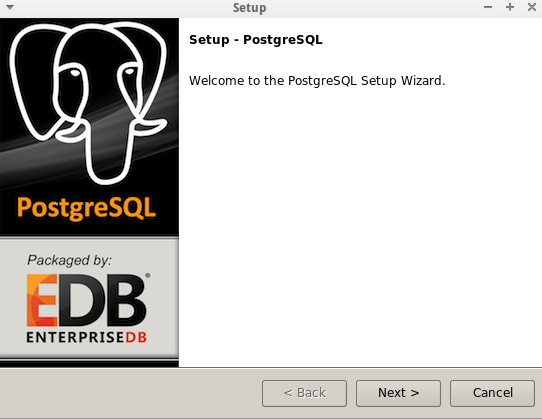
- Postgresql install different directory how to#
- Postgresql install different directory install#
- Postgresql install different directory full#
- Postgresql install different directory windows 10#
Leave the data directory as the default, and click Next. Leave these options checked as they are, and click Next again. The next page shows the components that are going to be installed. It’s recommended that you leave the default as it is.
Postgresql install different directory install#
To start, click Next in the following window.Ĭhoose the directory where you want to install PostgreSQL. Don’t worry if you don’t know what any of these things mean! The installation is straightforward. It’s a configuration of some important parameters like the port number, your postgres admin password, and more.
Postgresql install different directory how to#
To show you how to install PostgreSQL on Windows 10, I’ll have to explain the configuration process involved in the installation. Once it finishes, you’ll be directed to the following page:Ĭlick the installer that pops up in the bottom-left of your browser (you’ll see it there if you’re using Chrome-if not, double-click the installer from your Downloads folder).
Postgresql install different directory windows 10#
In this article, we’ll work with PostgreSQL version 10 (which, as of now, is the latest available) and a 64-bit Windows 10 operating system.Ĭlick the download button to continue. Here, you’ll need to select the postgres version to download and your operating system. Once you’re on the right page, click the “ Download the installer” link. To install PostgreSQL on your computer, you can download it from the official site or by using the download link for Windows. I’ll show you how to install PostgreSQl on Windows 10.

This database is available on Linux (or Unix), Windows, and macOS platforms. Starting the postgres server application.To install PostgreSQL, we’ll complete the following tasks: In this article, we’ll look at how to install PostgreSQL and test that the installation is working. Go back to the Services window (if it was still open, refresh it) and Start the PostgreSQL service.It may look like a complicated task to install PostgreSQL, Oracle, or SQL Server or any other database software, but it really isn’t! These days, most relational database management systems come with installation wizards that make the process much simpler.

So Right-click on the pg_db folder and under the Security Permissions add Network Services again, but this time it only needs Read & Execute as well as List folder contents permissions. it needs to have read access to the parent directories above it.

Postgresql install different directory full#
Type “ Network Service” and then click “ Check Names”, make sure it has Modify and Full Control permissions and then click OK.Įqually important PostgreSQL needs to be able to “see” the data-directory (see my ServerFault.StackEx question), i.e. Under the Security Tab click “ Edit.” and then “ Add.”. Change permissions for the new data directoryįor the new data-dictionary folder: Right-click on it and click Properties. Modify the configuration to the following with the sc command You can see the current configuration for PostgreSQL by typing sc qc postgresql-圆4-9.5 1000 and hitting Enter. Start the cmd prompt as an administrator by hitting the Windows button and typing cmd then right-clicking “Run as Administrator” In any case, I didn’t have permission on the server I was using and it seems to be a Bad Idea(tm) see hereĭirect registry modification should be avoided (because you can’t be sure what else Windows is changing when it modifies the path to exe, f.e.) unless you are absolutely sure what you do The -D "C:\Program Files\PostgreSQL\9.5\data" flag is indicating that the data directory is C:\Program Files\PostgreSQL\9.5\data DO NOT EDIT THE REGISTRY "C:\Program Files\PostgreSQL\9.5\bin\pg_ctl.exe" runservice -N "postgresql-圆4-9.5" -D "C:\Program Files\PostgreSQL\9.5\data" -w If you Right Click to Properties on the PostgreSQL services in Services, you’ll notice that the startup command is Modify the command that starts PostgreSQL

Ident_file = 'C:\Program Files\PostgreSQL\9.5\data\pg_nf' # ident configuration fileĤ. Hba_file = 'C:\Program Files\PostgreSQL\9.5\data\pg_hba.conf' # host-based authentication file # option or PGDATA environment variable, represented here as ConfigDir.ĭata_directory = 'E:\pg_db\data' # use data in another directory # The default values of these variables are driven from the -D command-line


 0 kommentar(er)
0 kommentar(er)
